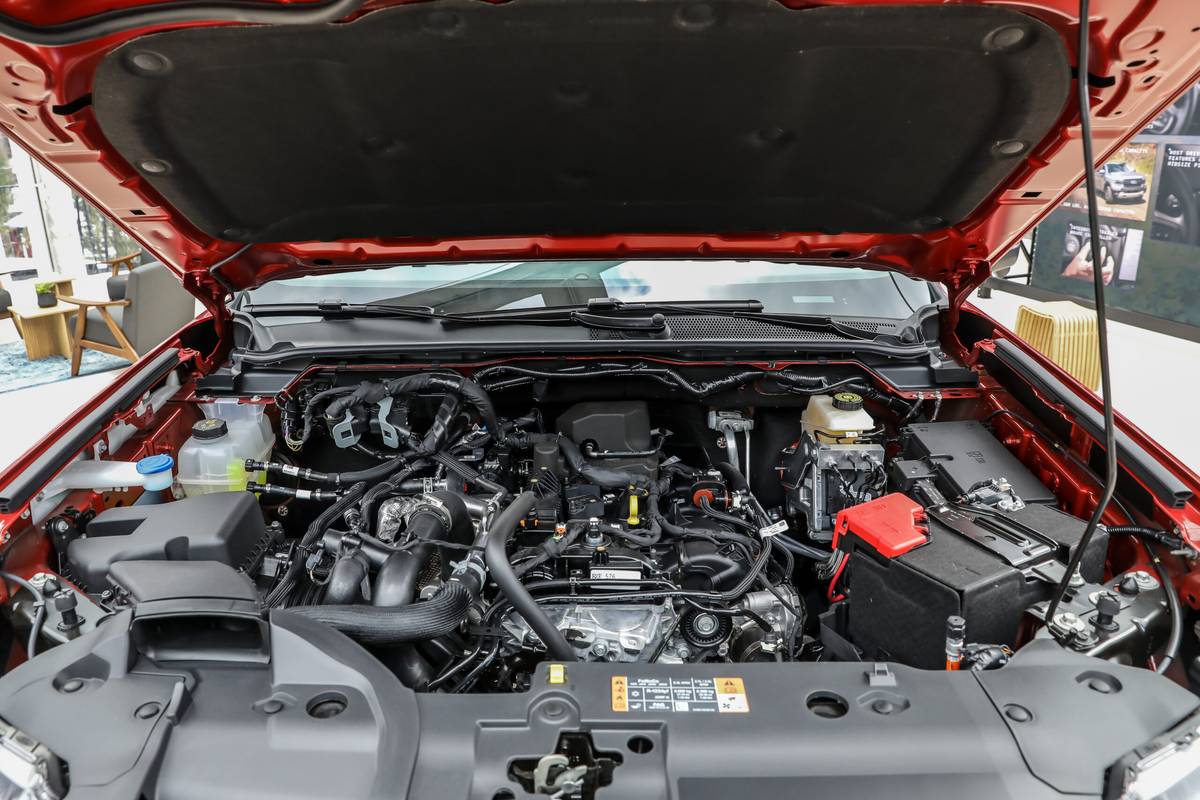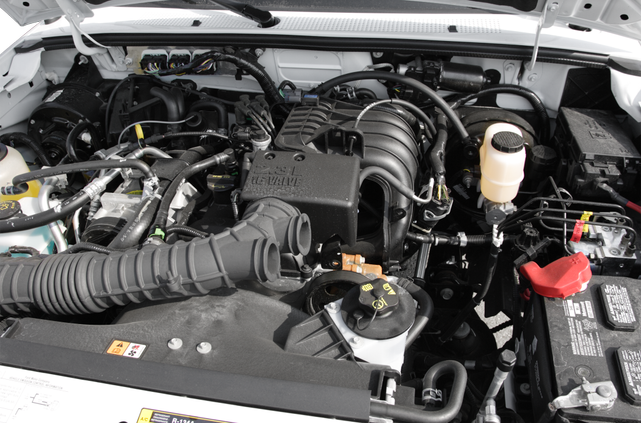How the 2.2 Ford Ranger Engine Delivers Power and Efficiency for Your Truck
How the 2.2 Ford Ranger Engine Delivers Power and Efficiency for Your Truck
Blog Article
Comprehending the Fundamentals of Auto Engines: Attributes, types, and features

Summary of Cars And Truck Engines
An automobile engine acts as the heart of a lorry, transforming gas right into power to move it onward. This detailed system makes up numerous elements that work in unison to ensure ideal efficiency and effectiveness. The essential procedure of an automobile engine includes the internal combustion process, where fuel and air are combined, fired up, and removed to develop power.
The engine's layout can significantly impact its performance, gas performance, and exhausts. Trick elements include the cyndrical tube block, pistons, crankshaft, and camshaft, each playing an essential role in the engine's overall feature.
In addition to these elements, engines commonly use various systems such as gas shot, ignition, and cooling down systems to enhance performance and longevity. Recognizing the fundamental auto mechanics of car engines is essential for detecting problems and performing maintenance, eventually adding to the automobile's dependability and effectiveness in time.

Sorts Of Automobile Engines
Auto engines can be classified into a number of types based upon their style, fuel kind, and functional principles. 2.2 ford ranger engine. One of the most typical classifications consist of inner burning engines (ICE), electric engines, and crossbreed engines
Inner combustion engines, which can be more separated right into fuel and diesel motor, operate by firing up a fuel-air mix to generate power. Fuel engines are normally lighter and smoother, while diesel motor are more fuel-efficient and offer better torque.
Electric engines make use of electrical energy saved in batteries to power an electrical motor, supplying instant torque and no exhausts during procedure. As innovation advances, electric lorries (EVs) are increasingly ending up being prominent for their ecological advantages and lower running expenses.
Crossbreed engines combine elements of both inner burning and electric engines, enabling adaptable source of power and boosted gas effectiveness. They can run in various modes, utilizing either the fuel engine, the electrical motor, or both all at once.
Each kind of engine has distinctive advantages and downsides, affecting their application in different car kinds and market sections, from small automobiles to sturdy vehicles. Comprehending these kinds is crucial for making informed decisions pertaining to vehicle choice and performance assumptions.
Engine Functions Clarified
Understanding engine functions is vital for realizing how cars run successfully. At the core of any internal burning engine lies the basic process of transforming fuel right into power. This process begins with the intake stroke, where air and fuel are drawn into the combustion chamber. Following this, the compression stroke compresses the air-fuel mix, raising its temperature level and stress.
The ignition occurs next, sparking the mixture and producing a quick expansion of gases. This force drives the piston down during the power stroke, which inevitably converts into the rotational motion of the crankshaft. The exhaust stroke after that gets rid of the invested gases from the chamber, giving way for a new cycle to commence.
In enhancement to these key features, engines also incorporate systems that take care of cooling and lubrication, ensuring optimum functional temperatures pop over here and lowering rubbing between relocating components. This detailed interplay of functions makes it possible for the engine to generate the power required for lorry propulsion while keeping efficiency and reliability. Comprehending these functions provides important insight right into the intricacies of vehicle engineering and boosts the capability to identify and address engine-related problems properly.
Secret Engine Features
Engine layout incorporates numerous essential features that substantially affect sturdiness, efficiency, and efficiency. Among one of the most vital elements is the engine arrangement, which consists of inline, V-type, and flat layouts. Each configuration affects the engine's balance, size, and power result, thus affecting total vehicle dynamics.
An additional vital function is the engine variation, referring to the overall volume of all cylinders. Bigger displacements typically yield even more power yet might endanger fuel efficiency. Engine products also play a pivotal role; light-weight and high-strength materials, such as aluminum and magnesium alloys, enhance efficiency without including excessive weight.
The kind of fuel injection system employed-- such as multi-port or straight injection-- affects burning efficiency and emissions. Supercharging and turbocharging are attributes that improve engine performance forcibly added air right into the burning chamber, boosting power outcome without significantly enhancing engine dimension.
Last but not least, the existence of advanced engine management systems optimizes fuel-air combination and ignition timing, adding to smoother operation and far better fuel economic situation. Collectively, these features moved here define an engine's abilities, setting the foundation for its efficiency and long life in a competitive automobile landscape.
Upkeep Tips for Engines
Proper engine maintenance is critical for making sure optimum efficiency and durability, as overlooking regular treatment can result in significant issues down the line. To maintain your engine properly, start with regular oil changes, usually every 3,000 to 7,500 miles, depending upon the sort of check my blog oil utilized. Fresh oil lubricates engine components, reducing friction and wear.
Additionally, keeping an eye on coolant levels is essential to stop overheating. Make sure that the coolant is topped up and remains in great problem to preserve effective temperature level policy. Consistently inspect and replace air and fuel filters, as clogged filters can prevent air flow and gas delivery, jeopardizing engine performance.
In addition, take note of spark plugs and ignition systems. Used or defective spark plugs can bring about misfiring and reduced efficiency. Inspecting the battery terminals and connections for rust is also crucial, as a weak battery can impact engine starting.

Verdict
In summary, a comprehensive understanding of automobile engines includes different types, features, and essential attributes that substantially affect lorry performance. Interior combustion engines, together with hybrid and electrical choices, show diverse mechanisms for energy conversion. 2.2 ford ranger engine. Acknowledging the necessary features, such as consumption and exhaust cycles, along with important engine features like setup and gas injection systems, equips car owners with the knowledge needed for efficient upkeep and operation, inevitably improving vehicle durability and performance
A car engine serves as the heart of an automobile, transforming fuel into mechanical energy to push it ahead. The fundamental procedure of a car engine entails the interior burning procedure, wherein gas and air are blended, ignited, and expelled to develop power.
Regularly change and inspect air and gas filters, as stopped up filters can impede airflow and fuel shipment, jeopardizing engine performance. - 2.2 ford ranger engine
In summary, an extensive understanding of automobile engines incorporates different kinds, features, and essential attributes that considerably affect vehicle efficiency. Identifying the important functions, such as consumption and exhaust cycles, alongside important engine functions like setup and gas shot systems, outfits vehicle owners with the expertise needed for reliable upkeep and operation, eventually improving car durability and efficiency.
Report this page